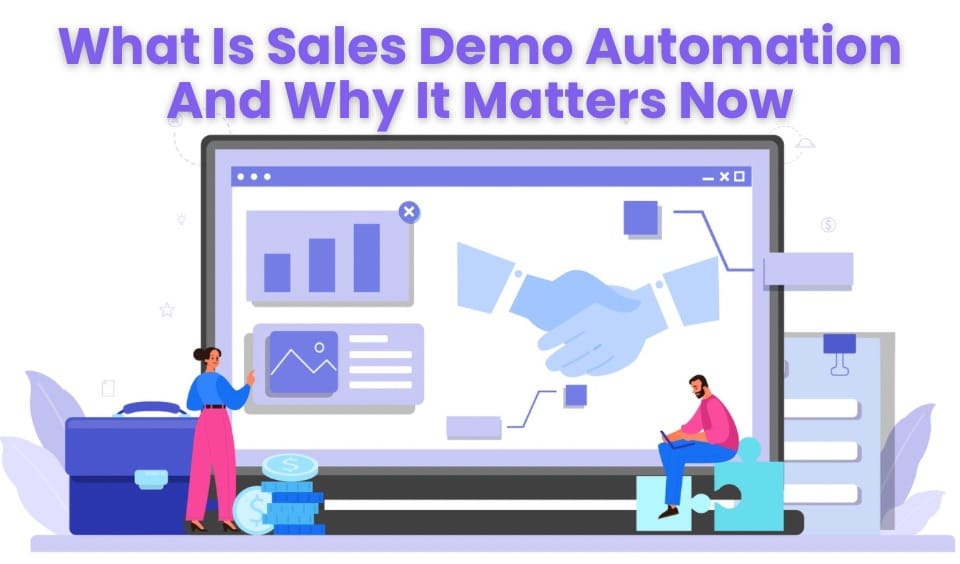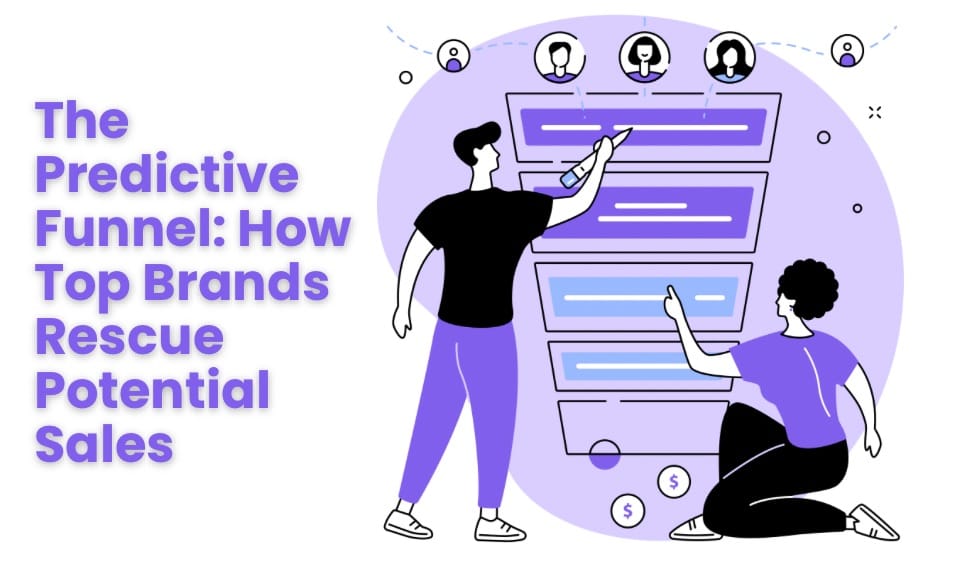One day, a lead is excited about your product. The next, they’re ‘looping in their team’—and suddenly, it’s a dead end. And just when you think you’ve closed a deal, procurement wants another round of approvals.
SaaS sales aren’t a straight path. It’s a process full of twists, delays, and unexpected hurdles. That’s why having a structured sales pipeline provides a clear roadmap for your team. It keeps your team focused, helps you track where deals stand, and shows you exactly where your sales efforts lead to dropping off.
We’ve broken down the seven key stages of every SaaS sales pipeline and added actionable tips on how to implement them in your team. Stick around till the end to learn how to turn leads into long-term customers!
What Is the SaaS Sales Pipeline?
Think of your sales pipeline as a roadmap for your sales representatives. It outlines every step a lead takes, from discovering your product to making a purchase. Each stage represents a key milestone in the different stages of a sales pipeline process—like signing up for a demo, discussing pricing, or negotiating a contract.
But it’s not just about tracking deals. A strong pipeline gives your team a repeatable process for guiding prospects through the buying journey. It turns guesswork into strategy and helps your business scale with confidence.
Why Does Your SaaS Sales Pipeline Stages Matter?
Most business owners mistake scaling a SaaS sales pipeline as just adding more leads. But real growth isn’t about quantity—it’s about building a system that scales with you.
A Reddit user shared their SaaS sales pipeline:
Lead → Qualified → Demo 1 Booked → Demo 1 Delivered → Demo 2 Booked → Demo 2 Delivered → Proposal Sent → Closed Lost (why) → Closed Won

It’s a solid process—great for a solo rep. But when you scale, problems arise: inconsistent qualification, slow deal cycles, and lack of data for optimization.
To avoid these bottlenecks, you need a structured, repeatable pipeline.
A well-managed pipeline helps you:
Identify weak spots in your sales process so you can fix them
Focus on high-value leads instead of wasting time on bad ones
Predict revenue more accurately so your business can scale
Close deals faster by streamlining each stage of the process
In SaaS, it’s not just about getting customers—it’s about keeping them. A great sales pipeline doesn’t just convert leads; it sets the foundation for long-term retention and growth.
What are the 7 SaaS Sales Pipeline Stages That Convert 2X More?
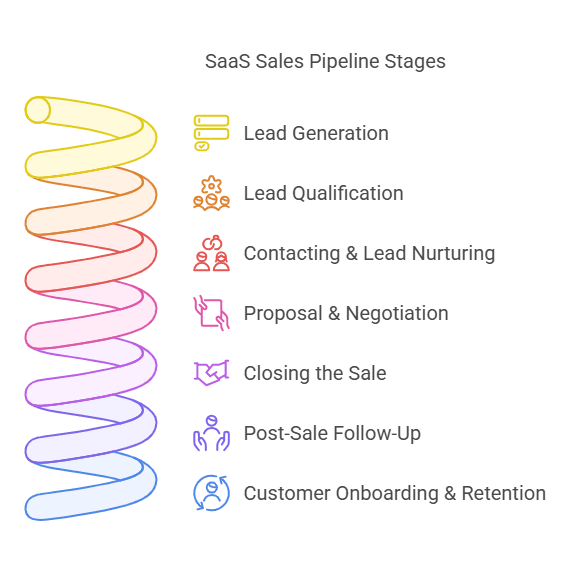
Without a structured sales pipeline, you’re guessing instead of selling. You don’t know which deals are about to close, which prospects need more nurturing, or where leads are slipping through the cracks. And in SaaS, a broken sales process means lost revenue.
Here’s how to build a pipeline that keeps deals moving and drives predictable growth.
Stage 1. Lead Generation (Prospecting)
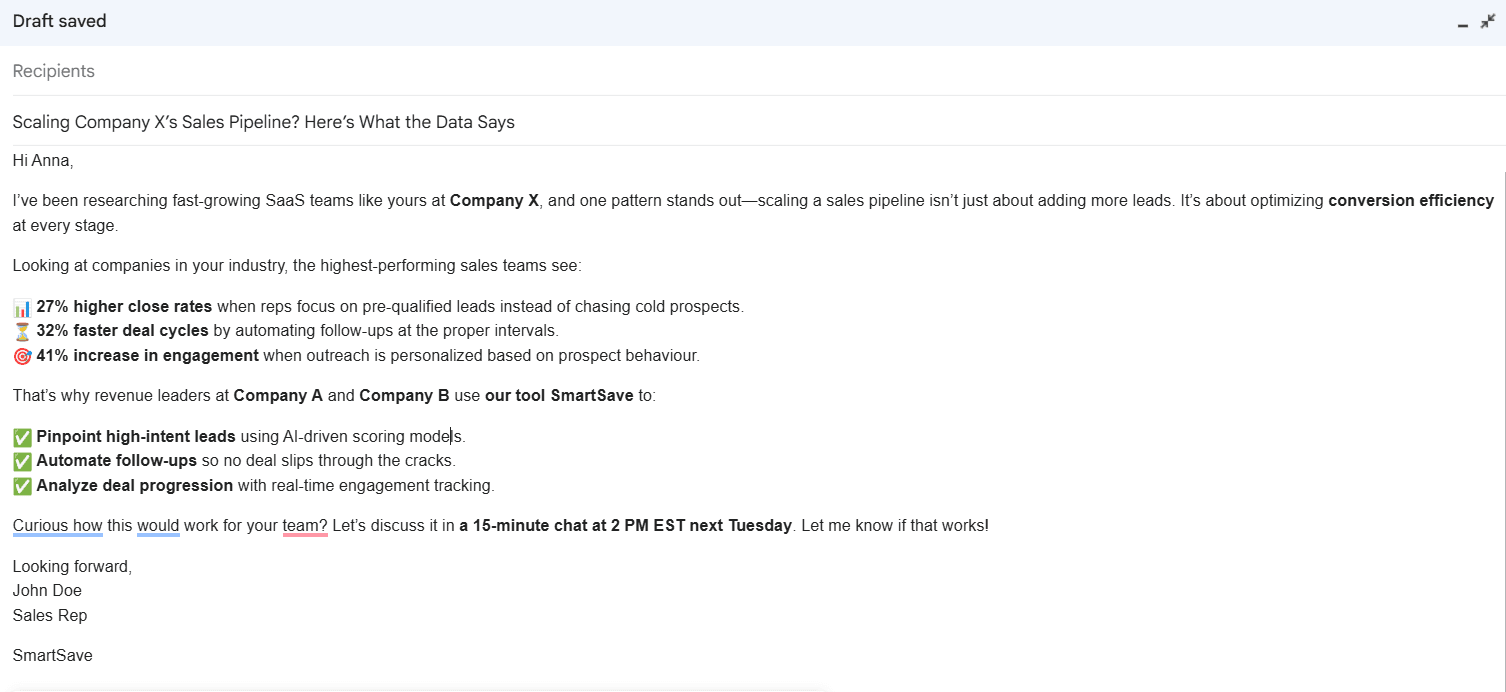
The first step is finding the right leads. Not just anyone but people who actually need your solution.
Most SaaS companies use a mix of:
Cold outreach – Targeted emails, LinkedIn messages, or calls
Inbound marketing – Blogs, SEO, social media, and ads
Referrals & networking – Webinars, events, and partnerships
The biggest challenge? Separating high-quality leads from noise. Instead of chasing every prospect, focus on those who match your ideal customer profile.
How to Get It Right:
Use the right tools – CRM, automation, and prospecting tools help filter and manage leads.
Personalize your outreach – Generic cold emails won’t cut it. Show prospects you understand their pain points.
Follow up strategically – Many leads won’t respond on the first try. A well-timed follow-up can make all the difference.
Not sure which tools you actually need at this stage? Check out the top user-favorite solutions SmartCue offers here.
Stage 2. Lead Qualification
Not every lead is worth your time. This stage is about identifying who’s actually interested and has the budget and authority to buy.
A solid lead scoring system helps prioritize leads based on:
Budget – Can they afford your product?
Decision-making power – Are you speaking with the right person?
Need – Does your solution solve a pressing problem for them?
Timeline – Are they looking to buy now or just browsing?
If a lead doesn’t meet the criteria, don’t waste time. Either nurture them for later or move on.
Stage 3. Contacting & Lead Nurturing
Now it’s time to engage with qualified leads. At this stage, you want to build trust and guide them toward a buying decision.
What Works Best:
Product demos – Show them exactly how your software solves their pain points.
Two-way conversations – Don’t just pitch. Ask questions, understand their challenges, and personalize your approach.
Educational content – Case studies, whitepapers, and webinars can help reinforce value.
Follow-ups – Leads rarely convert after one conversation. Keep engaging without being pushy.
The goal? Turn interest into commitment.
Stage 4. Proposal & Negotiation
Once the lead is interested, it’s time to talk pricing and terms. This stage can make or break the deal, so preparation is key.
What Makes a Strong Proposal:
Clearly defined pricing & ROI – Show the value, not just the cost.
Customization – Tailor the proposal to their needs.
Flexibility – Some clients may need adjustments to pricing or features. Be ready to negotiate.
The key here is balance. Be firm on value but flexible enough to close the deal.
Stage 5. Closing the Sale
This is the moment of truth. After negotiations, the deal is either closed—or stalled.
What to Focus On:
Overcoming last-minute objections – Address any lingering doubts.
Legal & contract finalization – Ensure both sides agree on terms.
Smooth handoff – Once the deal is closed, transition them to onboarding seamlessly.
And remember: A "no" today doesn’t mean a "no" forever. Keep the relationship warm for future opportunities.
Stage 6. Post-Sale Follow-Up
Closing the deal is just the beginning. Keeping customers happy is what leads to renewals and referrals.
What This Includes:
Post-Sale Activity | Why It Matters |
|---|---|
Onboarding | Helps customers get value quickly, reducing churn. |
Customer support | Fast, helpful support builds long-term trust. |
Feedback gathering | Understand what’s working and where to improve. |
Stage 7. Customer Onboarding & Retention
Retention is the real game-changer in SaaS. Acquiring new customers is expensive—keeping them is far more profitable.
How to Keep Customers Engaged:
Proactive communication – Regular check-ins, newsletters, and educational content.
Product expansion – Offer new features or add-ons that add value.
Loyalty programs & incentives – Reward customers for renewals and referrals.
The best SaaS companies don’t just sell products. They build long-term relationships.
How to Optimize Your SaaS Sales Pipeline Stages in 3 Steps?
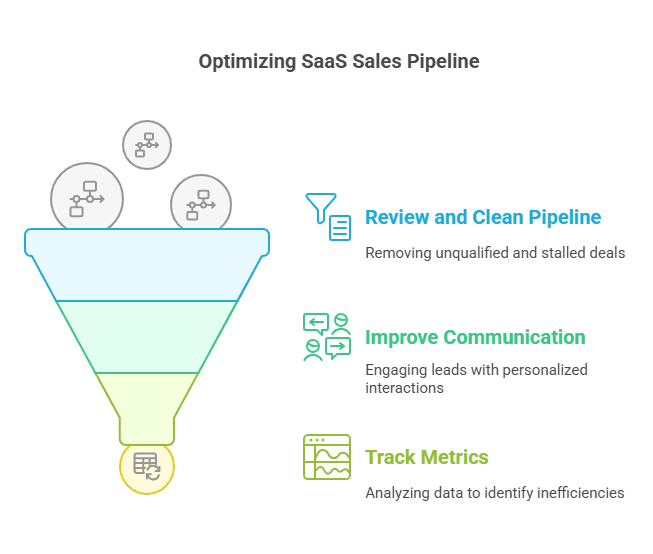
A messy sales pipeline is like a cluttered desk—opportunities get lost, decisions take longer, and efficiency drops. If your sales team is constantly chasing dead leads or struggling to close deals, it's time to clean up and optimize your pipeline.
Here’s how to keep your SaaS sales pipeline stages running smoothly and closing more deals.
Step 1. Regularly Review and Clean Your Sales Pipeline
Your sales pipeline can get cluttered over time. Stalled deals, outdated data, and unqualified leads can slow down progress. Regular clean-ups help you stay focused on high-potential opportunities and improve forecasting accuracy.
How to Keep Your Pipeline Clean:
Activity | Why It Matters |
|---|---|
Set Clear Qualification Criteria | Ensure sales reps focus on leads that fit your ideal customer profile. |
Validate Data Accuracy | Keep CRM data updated to improve forecasting and sales efficiency. |
Prioritize High-Value Leads | Focus time and effort on prospects more likely to convert. |
Remove Unresponsive Leads | Don’t waste time on prospects who have gone cold with no engagement. |
A clean pipeline means more focus, less wasted effort, and a smoother sales process.
Step 2. Improve Communication with Leads
Without clear communication and accurate contact information, deals stall, and prospects lose interest. Establishing a structured approach ensures prospects stay engaged and move through the pipeline efficiently.
Stay in Regular Contact – Don't let leads go cold. Schedule follow-ups at the right intervals to keep deals moving.
Personalize Every Interaction – Avoid generic follow-ups. Reference past conversations and tailor messaging to their pain points by focusing on specific actions that cater to their needs, including effective email marketing strategies.
Prioritize Outreach Daily – Set aside dedicated time each day for lead engagement to maintain momentum.
Sales isn't just about pitching—it's about building relationships and keeping prospects engaged until they’re ready to buy.
Step 3. Track Key Pipeline Metrics & Adjust Strategies
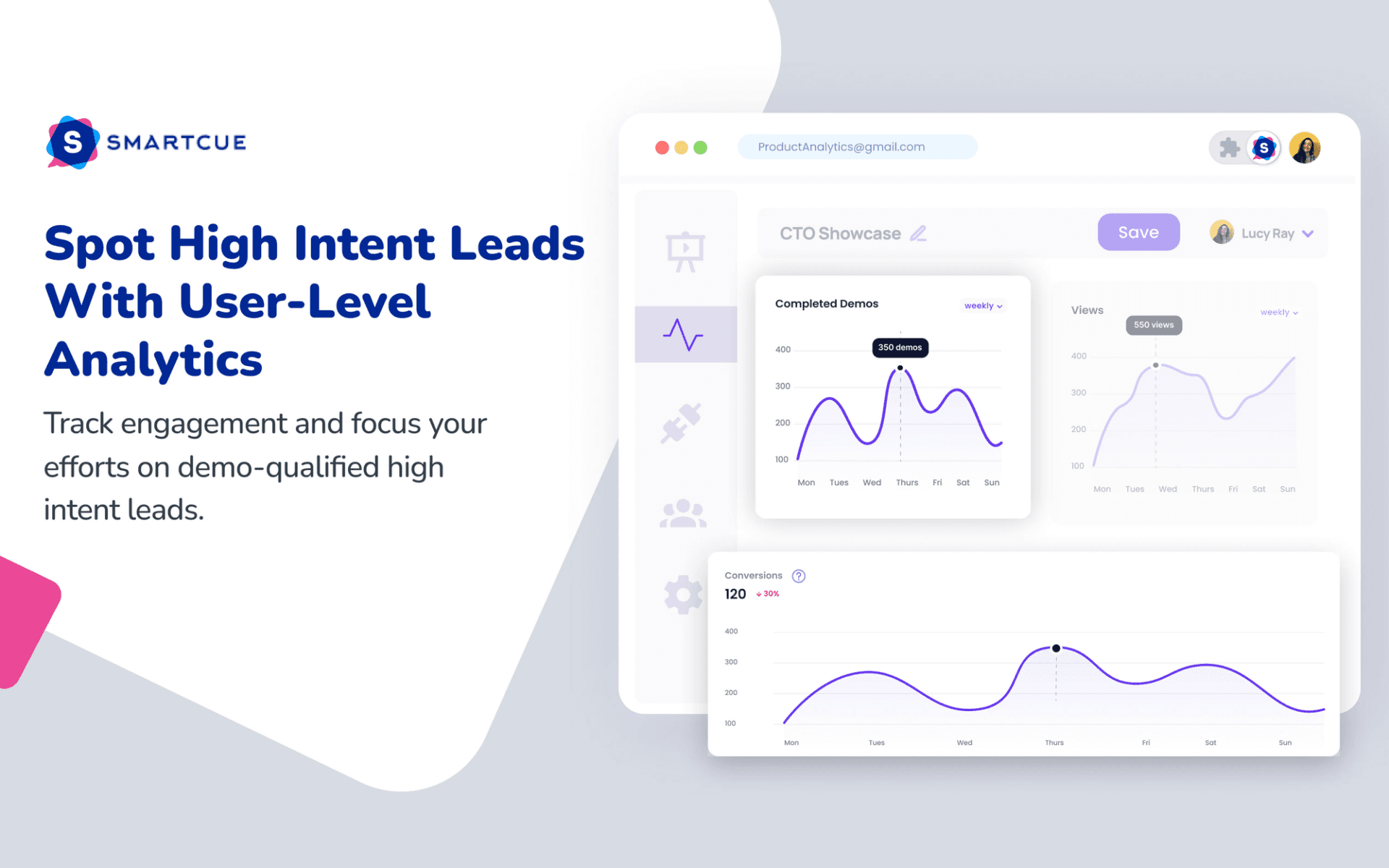
You can't improve what you don't measure. Tracking pipeline metrics helps you spot inefficiencies, adjust strategies, and improve conversions.
Sales Pipeline Metrics to Track:
Conversion Rate – What percentage of leads move to the next stage? Identify where prospects drop off and fix weak spots.
Lead Velocity Rate – How quickly are leads moving through your pipeline? Slow velocity signals bottlenecks.
Sales Cycle Length – How long does it take to close a deal? Shorter cycles mean faster revenue generation.
Average Deal Size – Understanding deal size helps with revenue forecasting and goal setting.
Regularly reviewing these metrics ensures your pipeline remains healthy, efficient, and aligned with revenue goals.
Keeping Up with Your Sales Pipeline Shouldn’t Be This Hard—Here’s a Better Way
If you’re a startup, small business, or sales leader structuring your sales process, you might not have the budget for an expensive CRM. We get it.
But without a clear system to track prospects and deal progress, missed follow-ups and lost opportunities can slow down your growth. A well-managed SaaS sales pipeline ensures consistency, visibility, and efficiency—helping you move deals forward with data-backed decisions.
Our solution- Optimizing Your Sales Pipeline with SmartCue
SmartCue helps sales teams create structured, interactive product demos while providing real-time insights into prospect engagement.
Deeper Engagement – Traditional videos and static presentations fail to hold attention. SmartCue’s interactive demos provide a self-guided experience that resonates with buyers.
Hands-on Exploration – 90% of B2B buyers prefer to experience a product before making a decision. SmartCue enables them to do exactly that, improving sales-readiness.
Better Conversion Rates – A significant percentage of demo requests don’t translate into meetings due to delayed follow-ups. With SmartCue, prospects can engage with your product instantly, reducing friction in the sales process.
Beyond demos, SmartCue’s analytics help teams track buyer behaviour, including:
Time spent on specific features
Drop-off points
Overall engagement metrics
What Sales & Marketing Leaders Are Saying
Users review, and we quote, "SmartCue has completely changed how teams showcase their products." Instead of passive demos, prospects get to explore on their own terms—boosting lead quality and sales efficiency, as Jen Wear from League points out. At Creditsafe, Craig Olson loves how easy it is to scale and customize demos without a steep learning curve. And for Desiree H. at EmployeeCycle, SmartCue delivers exactly what they needed: interactive, measurable demos that actually make an impact.
And the best part? No commitments, no guesswork—just a hands-on way to see if SmartCue fits seamlessly into your workflow. Try it free for 14 days and experience how easy it is to build interactive demos that engage prospects and drive results.
How to Create Your First Demo With SmartCue?
Here’s how you can get started in 4 easy steps.
Step 1: Sign Up & Install the Chrome Extension
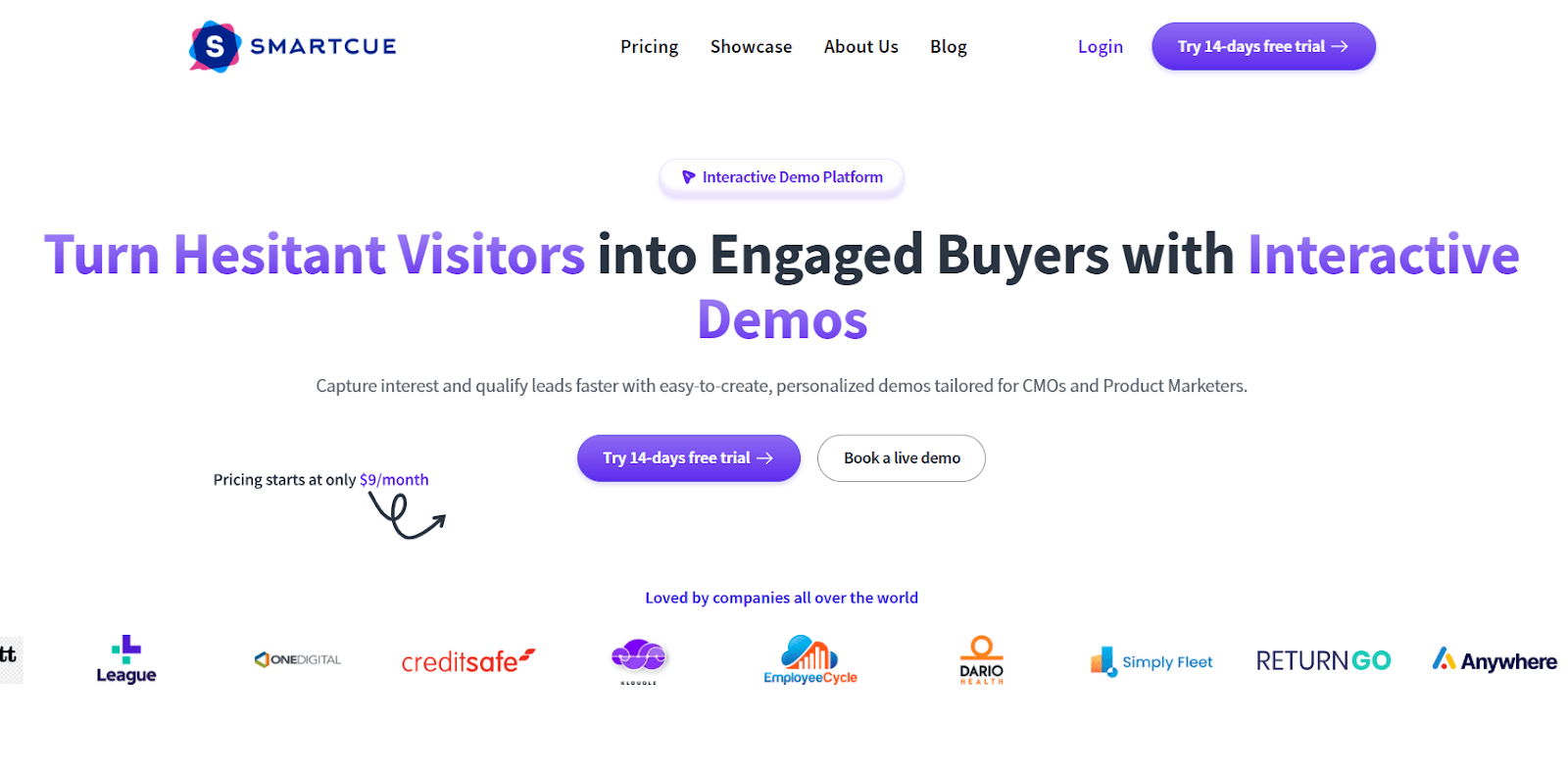
Get started with SmartCue’s free trial and set up your workspace in minutes.
Step 2: Capture & Build Your Demo
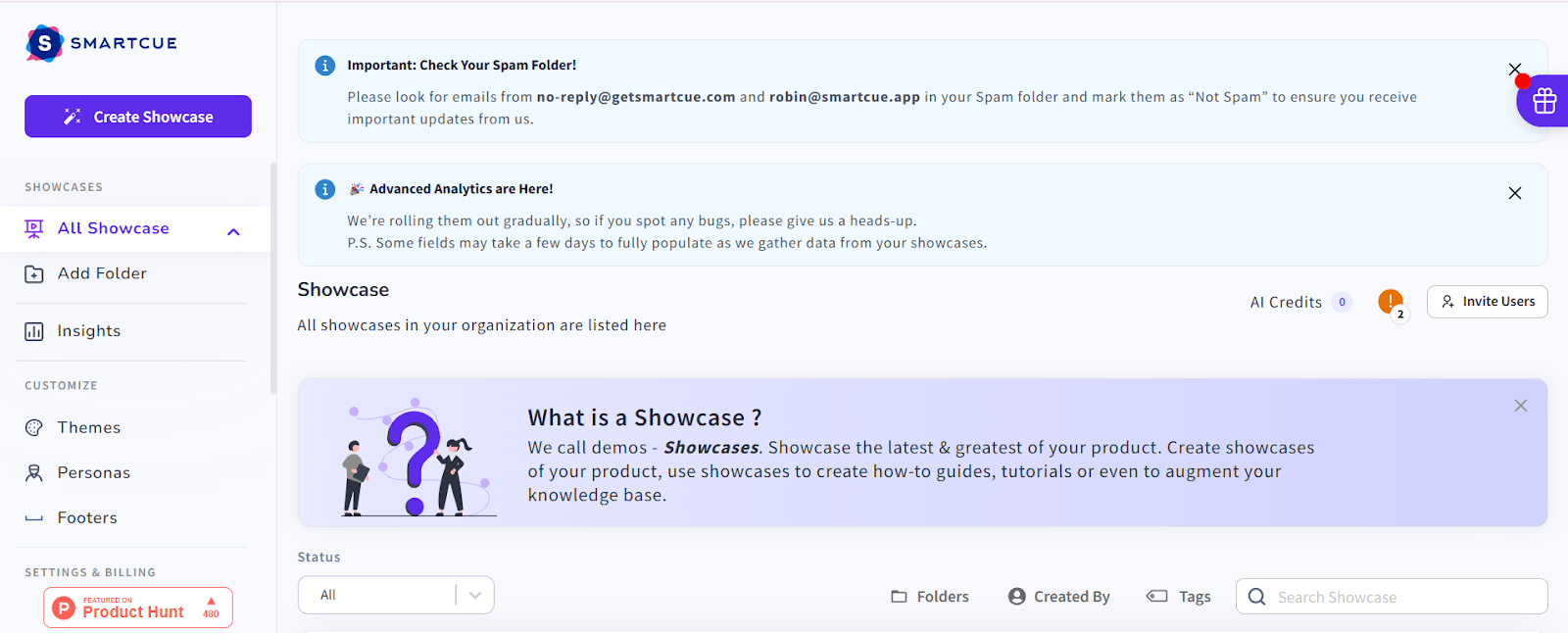
Use SmartCue to record your product walkthrough or start from a ready-made template.
Step 3: Customize for Clarity & Engagement

Add tooltips, text overlays, and interactive elements to guide prospects through your product’s value—without overwhelming them.
Step 4: Share & Track Engagement
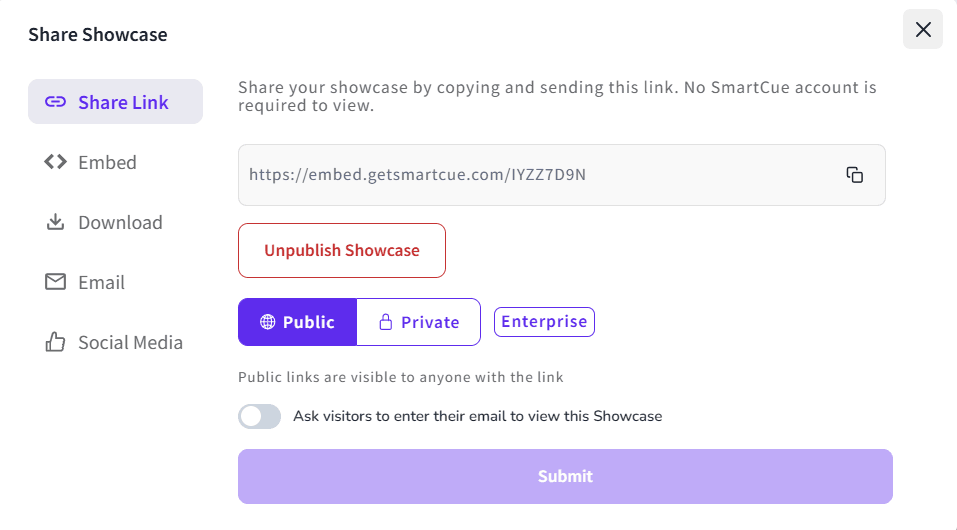
Send your demo link, then track which features prospects engage with the most—so you know exactly what resonates.
Frequently Asked Questions
What is the difference between a SaaS sales pipeline stage and a sales funnel?
While the sales pipeline represents potential buyers' journey from initial contact to purchase, visualizing specific needs related to sales activities at each stage, the visual representation of the sales funnel provides a broader view of lead flow, including lead acquisition, conversion rates, and overall sales process.
How can I accurately forecast revenue using my SaaS sales pipeline stages?
With a well-organized sales pipeline, you gain valuable insights into the number of leads at each stage of the pipeline, their likelihood of conversion, and their potential value for predicting future sales. This data, coupled with knowledge of your average sales cycle length and conversion rates, aids in accurate sales forecasting and revenue forecasting.
What are some common mistakes to avoid in SaaS sales pipeline stages management?
Common mistakes include neglecting to nurture leads, inadequately qualifying new leads, failing to maintain a regular follow-up protocol, needing a clear communication strategy, not keeping the pipeline updated, and ignoring crucial pipeline metrics. These missteps can hinder the efficiency and productivity of the sales process.
How often should I review my SaaS sales pipeline stages?
It's advisable for sales managers to review your sales pipeline regularly, preferably weekly or monthly. Regular monitoring helps identify potential issues, bottlenecks, or opportunities for improvement, thus leading to more effective customer relationship management of the sales process and improved sales performance.
What is the role of customer success in the SaaS sales pipeline stages?
Customer success plays a key role for SaaS companies in the post-sale stage of the SaaS sales pipeline. It involves ensuring a smooth onboarding process for new paying customers, providing ongoing support, addressing any issues or concerns, and ultimately fostering exceptional customer experience, satisfaction, loyalty, and retention.
